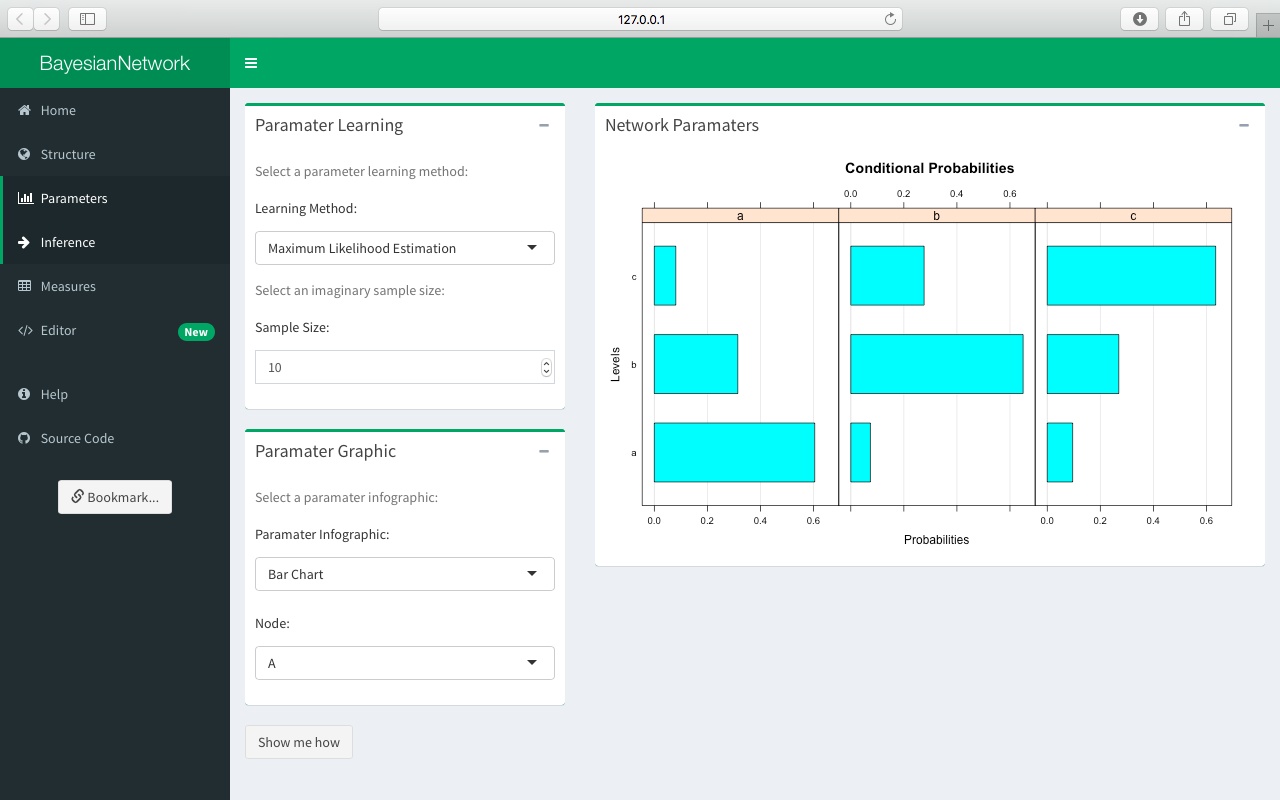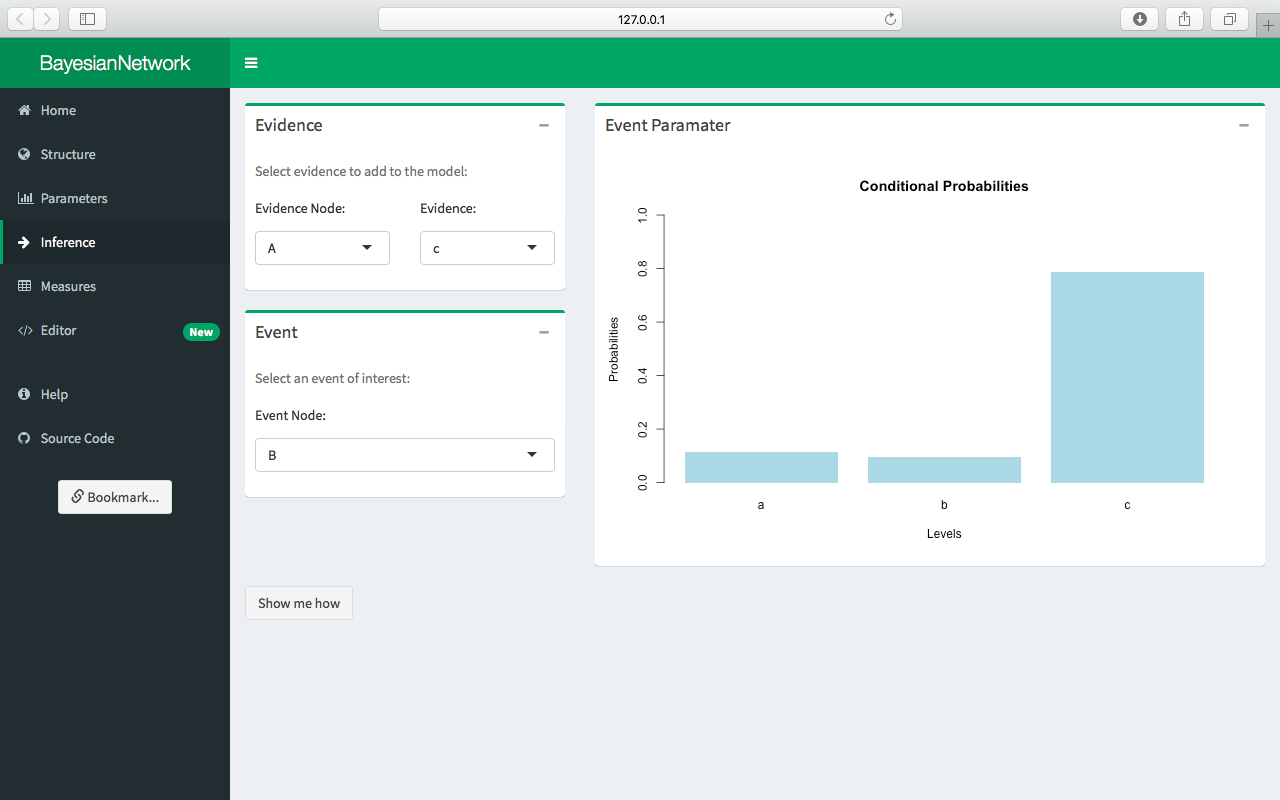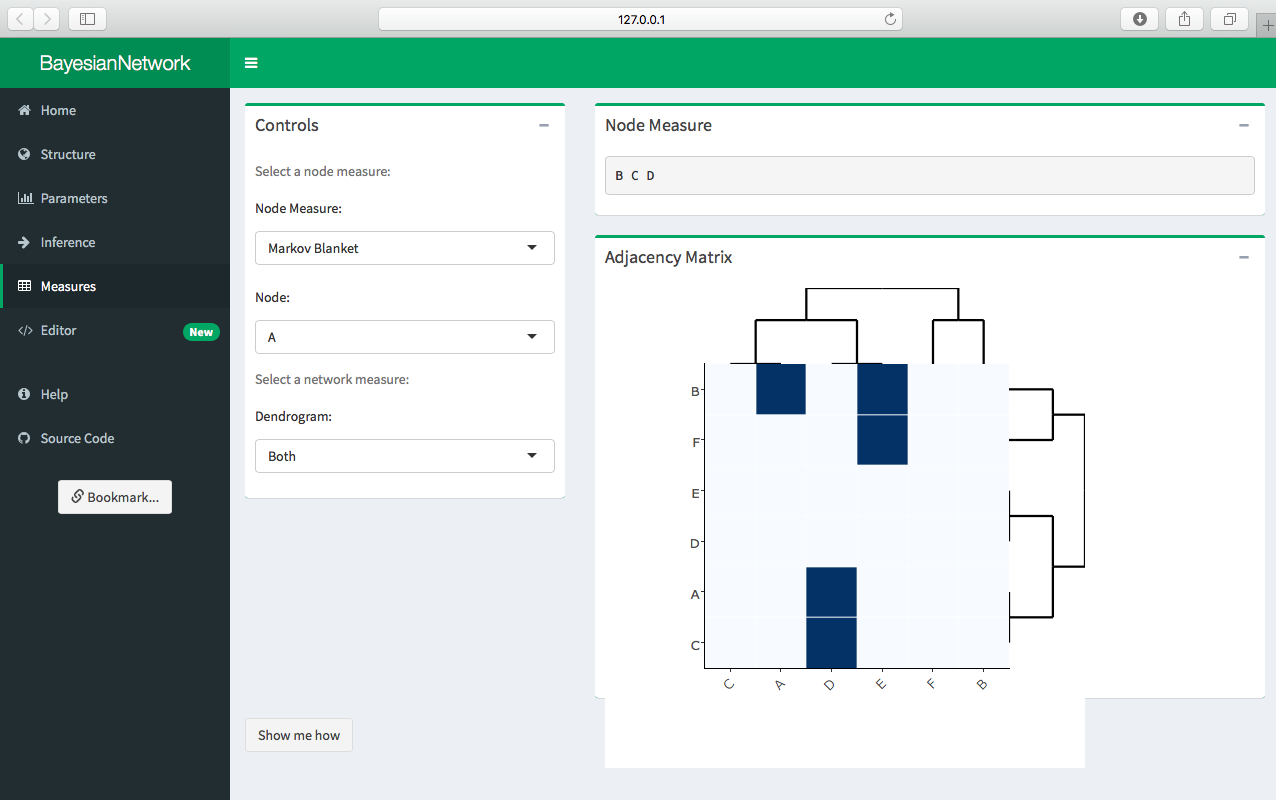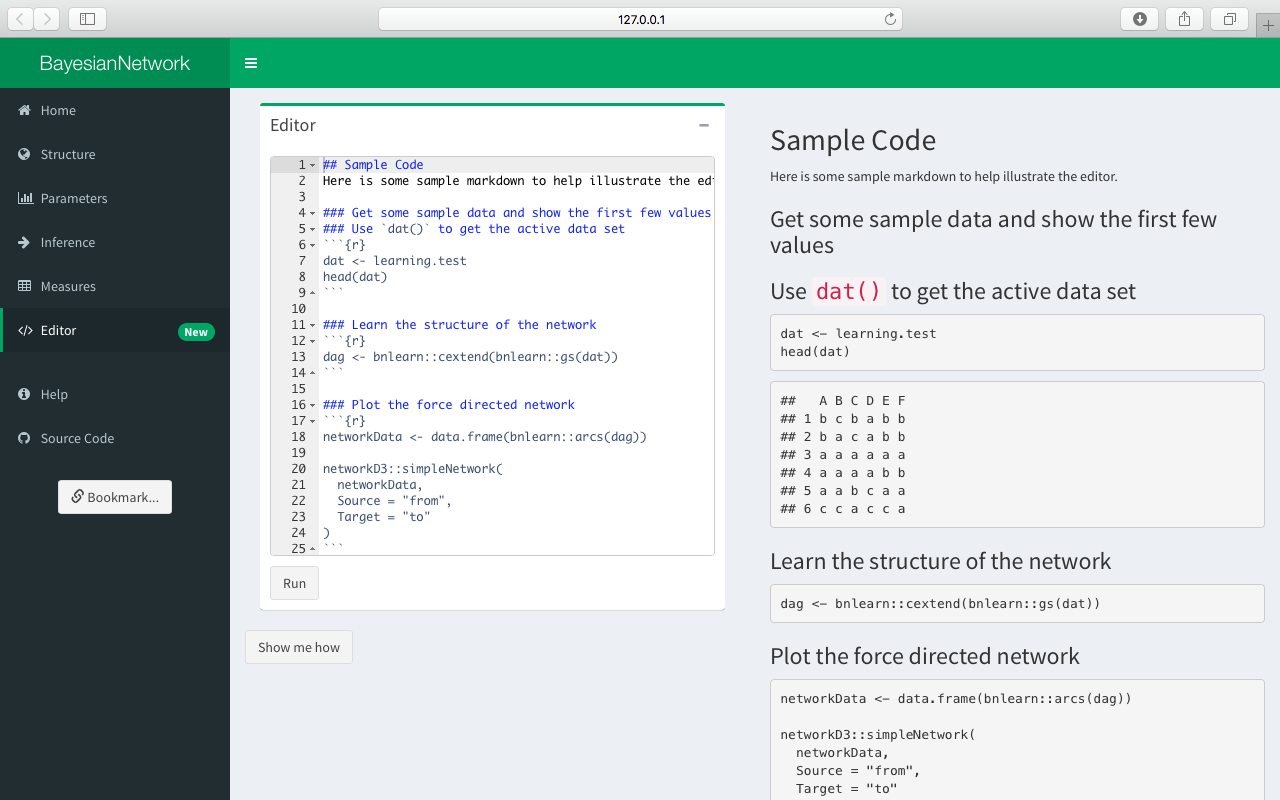https://github.com/paulgovan/bayesiannetwork
Bayesian Network Modeling and Analysis
https://github.com/paulgovan/bayesiannetwork
bayesian-networks learning-algorithm network-measures r
Last synced: 7 months ago
JSON representation
Bayesian Network Modeling and Analysis
- Host: GitHub
- URL: https://github.com/paulgovan/bayesiannetwork
- Owner: paulgovan
- License: apache-2.0
- Created: 2015-09-20T21:56:29.000Z (about 10 years ago)
- Default Branch: master
- Last Pushed: 2023-07-15T21:25:29.000Z (over 2 years ago)
- Last Synced: 2024-04-25T23:44:34.379Z (over 1 year ago)
- Topics: bayesian-networks, learning-algorithm, network-measures, r
- Language: HTML
- Homepage: http://paulgovan.github.io/BayesianNetwork/
- Size: 67.1 MB
- Stars: 115
- Watchers: 12
- Forks: 39
- Open Issues: 5
-
Metadata Files:
- Readme: README.md
- License: LICENSE
- Code of conduct: CODE_OF_CONDUCT.md
Awesome Lists containing this project
README
[](https://CRAN.R-project.org/package=BayesianNetwork)
[](https://cran.r-project.org/web/checks/check_results_BayesianNetwork.html)
[](https://cran.r-project.org/package=BayesianNetwork)
[](https://cran.r-project.org/package=BayesianNetwork)
[](https://doi.org/10.21105/joss.00425)
# BayesianNetwork
BayesianNetwork is a [Shiny](https://shiny.posit.co/) web application
for Bayesian network modeling and analysis, powered by the
[bnlearn](https://www.bnlearn.com/) package. To learn more about this
project, check out this
[paper](https://joss.theoj.org/papers/10.21105/joss.00425).
# Getting Started
To install BayesianNetwork in [R](https://www.r-project.org):
install.packages("BayesianNetwork")
Or to install the latest developmental version:
devtools::install_github('paulgovan/BayesianNetwork')
To launch the app:
BayesianNetwork::BayesianNetwork()
Or to access the app through a browser, visit
[paulgovan.shinyapps.io/BayesianNetwork](https://paulgovan.shinyapps.io/BayesianNetwork/).
# Example
## Home
Launching the app brings up the Home tab. The Home tab is basically a
landing page that gives a brief introduction to the app and includes two
value boxes, one each for the number of nodes and arcs in the network.
The following figure shows the basic Home tab.

BayesianNetwork comes with a number of simulated and “real world” data
sets. This example will use the “Sample Discrete Network”, which is the
selected network by default.
## Structure
Click Structure in the sidepanel to begin learning the network from the
data. The Bayesian network is automatically displayed in the Bayesian
Network box.
In order to learn the structure of a network for a given data set,
upload the data set in csv format using The Data Input box. Data should
be numeric or factored and should not contain any NULL/NaN/NA values.
Again, this example uses the “Sample Discrete Network”, which should
already be loaded.
Select a learning algorithm from the *Structural Learning* box. The
classes of available structural learning algorithms include:
* Constraint-based algorithms
* Score-based algorithms
* Hybrid-structure algorithms
* Local discovery algorithms
To view the network score, select a score function from the The Network
Score box.

“Sample Discrete Network” contains six discrete variables, stored as
factors with either 2 or 3 levels. The structure of this simple Bayesian
network can be learned using the grow-shrink algorithm, which is the
selected algorithm by default.
Try different combinations of structural learning algorithms and score
functions in order to see the effect (if any) on the resulting Bayesian
network.
## Parameters
Select the grow-shrink algorithm once again and then click Parameters in
the sidepanel in order to learn the parameters of the network. The
selected parameters are automically displayed in the *Network
Parameters* box.
Select a learning algorithm from the Parameter Learning box. This app
supports both maximum-likelihood and Bayesian estimation of the
parameters. Note that Bayesian parameter learning is currently only
implemented for discrete data sets. Then select the type of chart to
display in the Parameter Infographic box and, for the discrete case,
choose the preferred node. For example, the selected node *A* is a
discrete node with three levels: *a*, *b*, and *c*.

## Inference
Click Inference in the sidebar to add evidence to the network. Select
evidence to add to the model using the Evidence box and select a
conditional event of interest using the Event box. The resulting
conditional probabilities are automatically displayed in the Event
Parameter box. For example, the following figure shows the conditional
probability of event *B*, given evidence of *c* for node *A*. Changing
the evidence for node *A* to *a* or *b* similarly changes the
conditional probability of event *B*. Note that inference is currently
not supported for continuous variables.

## Measures
Click Measures in the sidepanel to bring up a number of tools for
classic network analysis. The Measures tab has a number of node and
network measures. The node measures include:
* Markov blanket
* Neighborhood
* Parents
* Children
* In degree
* Out degree
* Incident arcs
* Incoming arcs
* Outgoing arcs
Select a node measure in the Controls box and the result will be
displayed in the Node Measure box.
The Controls box also contains different options for displaying
hierarchical clusters/dendograms for the network. Select the type of
dendogram to display (row, column, both, or none) and the resulting
dendogram(s) will be displayed along with the adjacency matrix in the
Adjacency Matrix box.

## Editor
Finally, click Editor in the sidepanel in order to bring up the
interactive code editor. Some example markdown is automatically
displayed in the Editor box. Click the Run button to knit the code and
the resulting report will be displayed in the body of the app.

Note that the Editor is only available in the package (not on
shinyapps.io).
## Code of Conduct
Please note that the BayesianNetwork project is released with a
[Contributor Code of
Conduct](http://paulgovan.github.io/BayesianNetwork/CODE_OF_CONDUCT.html).
By contributing to this project, you agree to abide by its terms.